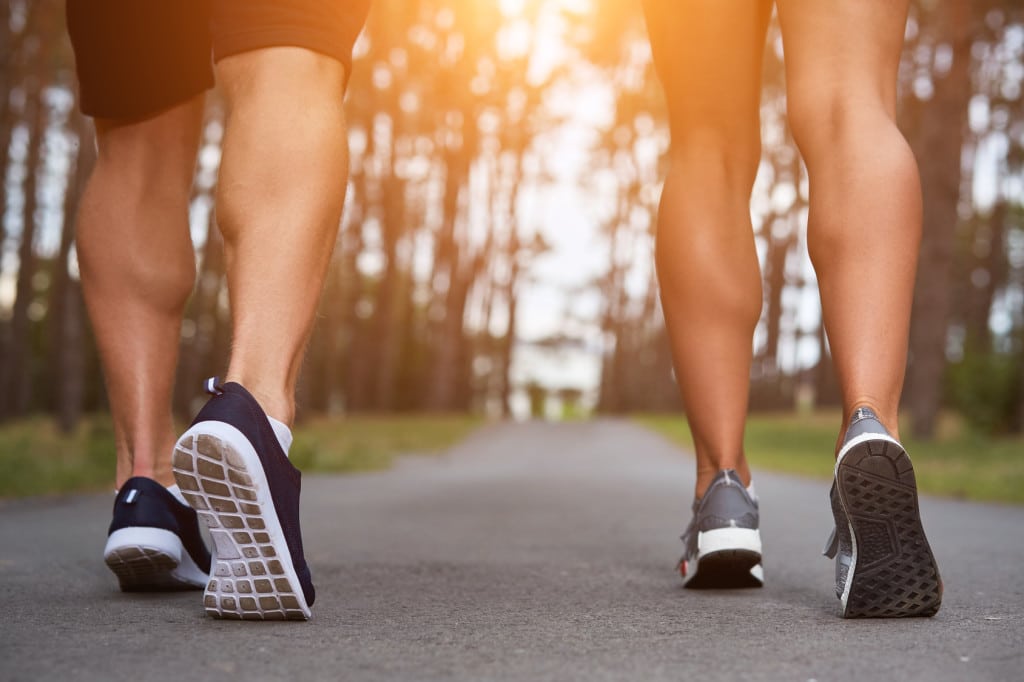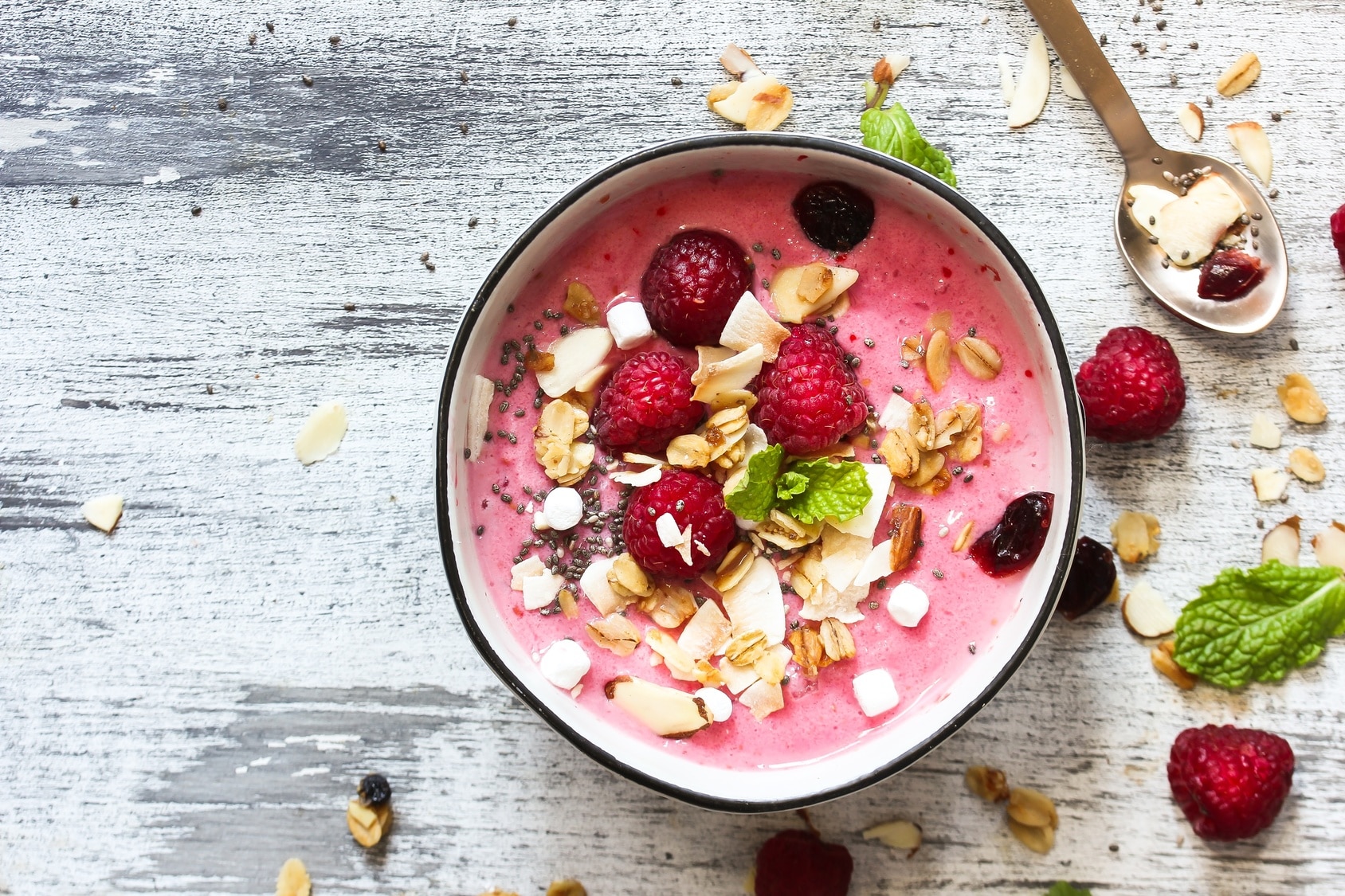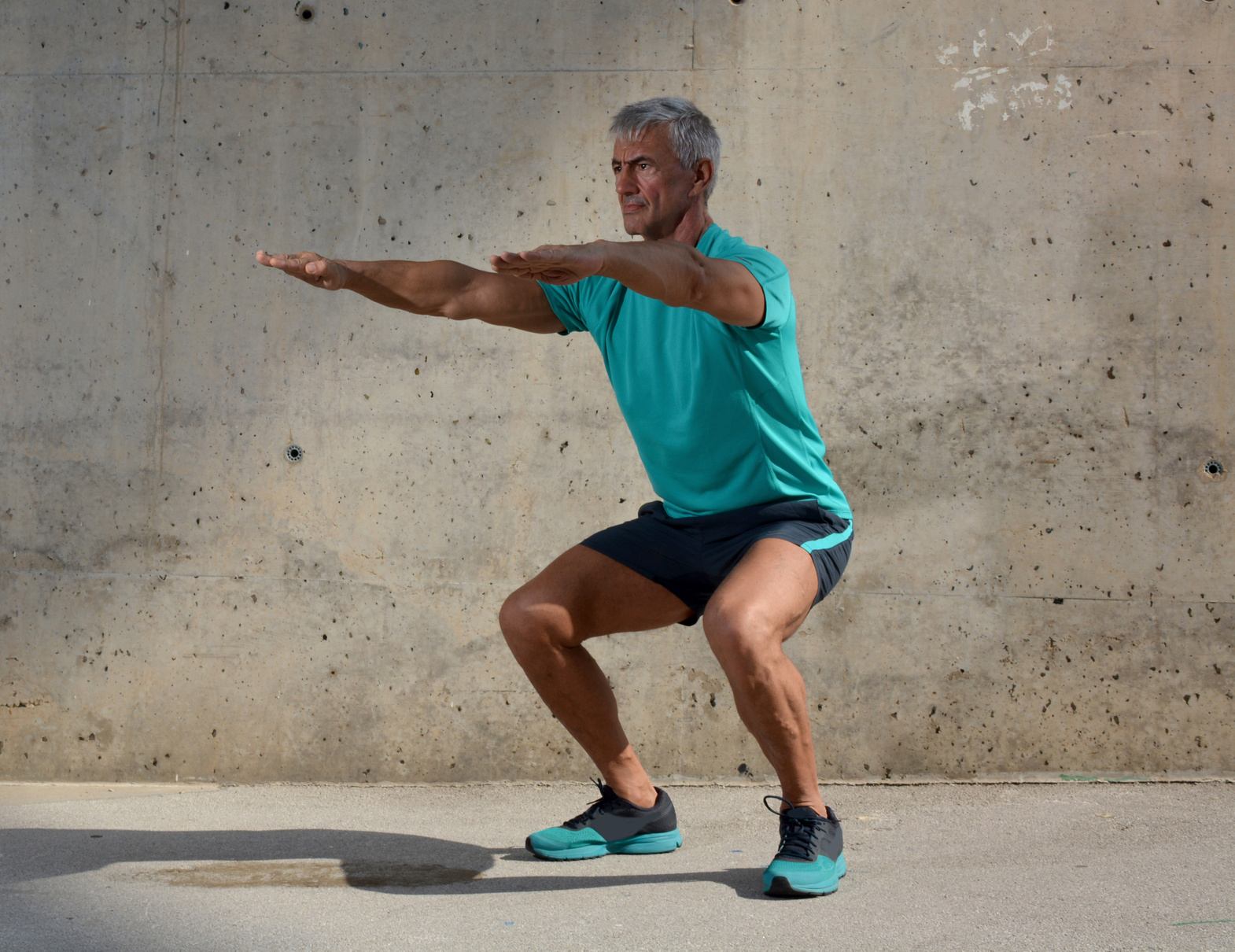Ready to supercharge your performance and take your running game to the next level? Well, guess what? It all starts with what you put on your plate! Yep, you heard me right. The food you eat before, during, and after each run can make a world of difference, not just in your running performance, but also in your overall health and well-being
Here’s the deal: neglecting your nutritional needs is like trying to run a marathon with shoes that are two sizes too small. It’s a recipe for mediocrity, injury, and burnout. But fear not, my friend, because I’m about to let you in on a little secret that will revolutionize your diet.
In today’s article, I’m sharing with you a list of the most incredible, nutrient-dense foods in the world!
These powerhouses of nutrition are packed to the brim with everything your body craves. We’re talking top-notch quality carbohydrates to fuel your runs, proteins to repair and build those hardworking muscles, and fats that give you the sustained energy you need.
Ready? Let’s get started.
Food For Runners – 1: Beans
Let me tell you a little story about my relationship with beans. Back in the day, I used to turn my nose up at those humble legumes. They just weren’t on my culinary radar. But oh, how things have changed! In my mid-20s, I took a leap of faith and gave beans a chance—and boy, am I glad I did!
You see, beans are like hidden treasures of the food world. Not only are they incredibly delicious once you develop a taste for them, but they also come with a whole host of benefits for us runners. Picture this: one cup of beans serves up a whopping 15 grams of fiber. That’s like getting a fiber-packed superhero cape that swoops in and provides you with 60 percent of your recommended daily minimum! And let’s not forget about the 20 grams of protein they bring to the table. This protein power duo not only tames those hunger pangs but also helps keep those notorious overeating tendencies at bay. It’s like having a personal bodyguard against mindless snacking.
But wait, there’s more! Beans are not just fiber and protein powerhouses. They’re also bursting with vitamins, antioxidants, slow-burning carbs, and a wide range of minerals. It’s like a nutrient extravaganza, with each bean bringing its unique set of goodies to the party. And here’s the kicker—they’ll leave you feeling satisfied, energized, and ready to conquer the world without weighing you down like a lead balloon. I
Oh, and here’s some exciting news for those with type 2 diabetes. A study published in the Archive of Interval Medicine found that incorporating beans, along with their legume buddies like lentils and chickpeas, into your diet can actually improve blood sugar control and reduce the risks of heart diseases. That’s like getting a double win for your health, all thanks to these humble legumes.
Food For Runners – 2: Lentils
Let me introduce you to the true superhero of the legume world—lentils! These tiny powerhouses are like metabolic dynamos, packed with an arsenal of nutrients that can give your body the boost it craves.
First up, let’s talk about iron. Lentils are an iron-rich treasure trove. And trust me, iron is a nutrient you don’t want to mess with. It’s like the secret fuel that powers your body’s engine. When you’re low on iron, it’s like running on an empty tank. You’ll find yourself getting tired at the drop of a hat, and even a simple jog can leave you feeling dizzy and drained.
Not to mention, iron deficiency can show up on your skin, giving you that pale appearance, and weaken your immune system, making you more susceptible to illness. But fear not, my friend, lentils have got your back. They’re here to replenish your iron stores and supercharge your energy levels.
But that’s not all—lentils have an entire arsenal of nutrients to offer. Think of them as a compact package of essential vitamins and minerals. They’re like a treasure chest of Vitamin B, potassium, and other valuable goodies that your body craves. These nutrients work together like a symphony, supporting your overall health, boosting your metabolism, and keeping your body functioning at its best.
And here’s the best part—lentils are not only a nutritional powerhouse, but they’re also incredibly convenient. They’re like the MVPs of meal prep. With lentils, you don’t have to spend hours slaving away in the kitchen. They’re like the culinary wizards that can go from bag to plate in less than half an hour.
Food For Runners – 3: Avocados
First things first, avocados are rich in monounsaturated fats. Don’t let the word “fat” scare you away because these are the good guys that your heart loves. It’s like having a heart-friendly ally by your side.
Research studies have shown that avocados can work their magic by helping to lower levels of LDL, which is the notorious artery-clogging bad cholesterol. But that’s not all—avocados also have the superpower to boost your levels of HDL, the good cholesterol.
But the wonders of avocados don’t stop there. They’re like a treasure trove of over 20 vital nutrients, all wrapped up in a creamy green package. Inside, you’ll find choline, Vitamin E, and Vitamin B, just to name a few.
These nutrients play a unique role in supporting your overall health and well-being.
Now, let’s talk about potassium, another runner-friendly nutrient that avocados have in abundance. Think of potassium as the conductor of your body’s orchestra. It’s like the maestro that regulates heart and muscle contractions, keeping everything in harmony.
However, it’s important to remember that while avocados are delicious and nutritious, they do come with a caloric punch. Think of it as a worthy indulgence. One avocado packs roughly 220 calories and 20 grams of those beneficial monounsaturated fats.
Food For Runners – 4: Eggs
Let’s talk about one of my all-time favorite protein sources—the incredible egg. I absolutely adore eggs, and I’m here to tell you that you shouldn’t shy away from them either.
If you’ve been avoiding eggs because you’ve heard they’re bad for your cholesterol, it’s time to rethink that notion. Recent research has shown that eggs don’t have a negative impact on blood cholesterol levels and are not the culprits behind heart attacks. So go ahead and crack those eggs with confidence!
But wait, there’s more! Eggs are not only delicious but also one of the best foods you can consume if you’re looking to shed those extra pounds.
They are a powerhouse when it comes to nutrition. Packed with protein and healthy fats, eggs have the incredible ability to keep you feeling full and satisfied for longer, all while being low in calories. It’s like having a satiety superhero on your plate.
What makes eggs even more extraordinary is their abundance of essential amino acids—the building blocks of protein that your body needs for a wide range of functions, from creating brain chemicals to building strong muscles.
Protein is like the construction crew that builds and repairs your body, and eggs provide an excellent source of these essential nutrients.
When you consume protein-rich foods like eggs, they work their magic by keeping you satiated for longer periods, helping you eat less throughout the day. But that’s not all. The protein found in eggs, especially in the yolks, stimulates the release of a hormone called glucagon. Think of glucagon as as the hormone that promotes fat burning, helping you on your weight loss journey.
In fact, research conducted by the Pennington Biomedical Research Center found that having eggs for breakfast can make a significant difference in your hunger levels throughout the day compared to a breakfast consisting of complex carbs, like a bagel. So, starting your day with an egg is like setting yourself up for success and keeping those hunger pangs at bay.
Eggs truly are an “eggcellent” option for your morning meal. I personally enjoy having two or three eggs, scrambled to perfection, with a generous serving of greens and a drizzle of olive oil. It’s a delightful combination that fuels my day and keeps me energized.
Food For Runners – 5: Sweet Potato
One of the standout qualities of sweet potatoes is their impressive content of beta-carotene, an antioxidant that can work wonders for our bodies.
Think of beta-carotene as a shield against the oxidative stress that comes with intense workouts.
It helps protect our cells from damage and aids in post-exercise recovery. Sweet potatoes are like little orange powerhouses, supplying us with this essential nutrient to support our athletic endeavors.
But that’s not all the goodness sweet potatoes have to offer. They’re also abundant in Vitamin A, a nutrient that plays a crucial role in maintaining healthy eyes, preventing sun damage (a must for all outdoor runners), and boosting our immune system. Think of Vitamin A as your superhero sidekick, keeping your eyes sharp and your immune system in tip-top shape.
And let’s not forget about the mighty Vitamin C found in sweet potatoes. As runners, we put our bodies through rigorous workouts, and that can lead to the production of free radicals—those pesky molecules that can cause oxidative stress.
But fear not, for sweet potatoes come to the rescue once again! Packed with Vitamin C, they provide us with a natural defense against those running-induced free radicals. It’s like having a shield to protect our cells and keep our bodies performing at their best.
Now, let’s talk about convenience. As athletes, we’re always on the lookout for quick and nourishing pre-run meals. Well, look no further than sweet potatoes! These versatile tubers can be easily incorporated into your pre-run routine. A cup of mashed sweet potato serves up approximately 55 grams of carbohydrates, giving you a fantastic energy boost for a solid hour of running. It’s like fueling up with nature’s own energy source.
Food For Runners – 6: Blueberries
Picture this: as you conquer those miles, your body is hard at work, churning out free radicals through its metabolic processes. These pesky molecules can wreak havoc on your cells and hinder your performance. But fear not, for blueberries are here to save the day!
In a groundbreaking study conducted at Cornell University, researchers found that blueberries reign supreme when it comes to antioxidant capabilities among a whopping 25 fruits and berries. They’re like the superheroes of the antioxidant world, ready to fight off those free radicals and keep your body in top shape. So, when it comes to antioxidant power, blueberries take the crown.
But that’s not all blueberries have to offer. These little gems are also packed with an abundance of manganese, a mineral that plays a crucial role in converting carbohydrates, protein, and fats into energy. Think of manganese as the fuel pump for your running machine. It helps your body efficiently transform the nutrients you consume into the energy you need to power through your runs. With blueberries by your side, you’ll have that extra boost to crush your goals and keep your energy levels soaring.
Whether you prefer sprinkling them on your morning oatmeal, blending them into a refreshing smoothie, or simply popping them as a post-run snack, blueberries are a versatile and delicious way to fuel your runs and support your overall well-being.
Food For Runners – 7: Kale
Let’s talk about Vitamin K, a key player in bone development. As runners, our bones endure a lot of stress and impact. But fear not, because kale is here to fortify your skeletal system. Packed with Vitamin K, this leafy green superhero ensures your bones stay strong and resilient, even in the face of high-intensity running. In fact, just one serving of kale delivers a whopping 700% of your daily recommended intake of Vitamin K.
Now that’s a bone-boosting dose you don’t want to miss!
But wait, there’s more! Kale has another trick up its sleeve: Vitamin C. We all know that keeping our immune system in top shape is crucial for runners. The last thing we need is to be sidelined by infections, viruses, or pesky colds. Luckily, kale comes to the rescue with its sky-high Vitamin C content. A single serving of this vibrant green goodness provides a staggering 200% of your daily recommended dosage of Vitamin C. With each bite of kale, you’re giving your immune system the support it needs to fend off those unwelcome invaders.
What’s more?
Besides being a Vitamin K and Vitamin C powerhouse, kale also boasts impressive amounts of vitamins A and B6, iron, and calcium. It’s like an all-in-one nutrient package tailor-made for runners.
Food For Runners – 8: Spinach
Picture this: Popeye, the iconic cartoon character, with his bulging biceps and unrivaled strength, has a secret weapon tucked away in his back pocket—spinach. But here’s the fascinating part: Popeye’s creator wasn’t just spinning a tale. He tapped into the real science behind spinach, harnessing its incredible ability to provide both strength and power.
This leafy green superhero is armed with a special ingredient called nitrates, and they hold the key to unlocking your running potential. Research has revealed that spinach is packed with these nitrates, which act as mighty boosters for your performance on the road. How, you ask? Well, nitrates have the remarkable ability to supercharge your circulatory system and muscles by maximizing the delivery of oxygen and essential nutrients. It’s like having a turbocharger for your running engine, propelling you forward with enhanced endurance and efficiency.
But that’s not all—spinach has more tricks up its sleeve. Let’s talk about Vitamin K, a nutrient that plays a vital role in maintaining healthy bones. If you want your running adventures to be supported by a strong skeletal system, spinach is your go-to teammate. This leafy green powerhouse is loaded with Vitamin K, ensuring that your bones stay robust and resilient, ready to tackle any challenge that comes your way.
Now, let’s address another health aspect: blood pressure. We all know that maintaining a healthy blood pressure is crucial for our overall well-being, especially as runners. And guess what? Spinach comes to the rescue yet again. Hidden within its vibrant leaves are peptides, little wonders that work their magic by lowering blood pressure. It’s like spinach has its own team of superheroes, swooping in to keep your blood pressure in check and allowing you to run with confidence and ease.
But the goodness of spinach doesn’t stop there. This leafy green powerhouse is a treasure trove of essential nutrients that your body craves. Think of it as a nutritional goldmine, boasting generous amounts of Vitamin C, calcium, magnesium, and iron. These nutrients play crucial roles in supporting your overall health, from bolstering your immune system to maintaining strong muscles and optimizing energy production. Spinach truly is a one-stop shop for all your nutritional needs.
Food For Runners – 9: Wild Salmon
Imagine diving into a culinary adventure fit for a king—a journey where taste, nutrition, and performance converge.
A succulent four-ounce serving of wild salmon gracing your plate, brimming with a mighty 30 grams of protein. It’s no wonder that wild salmon has earned its royal title as the king of fish. With each flavorful bite, you’re fueling your body with a protein powerhouse that supports muscle growth, repair, and overall strength. It’s like granting your body a regal feast fit for a champion.
But wait, there’s more to this majestic fish than just its protein prowess. Wild salmon holds a secret weapon in the form of selenium—an antioxidant that works tirelessly to promote cardiovascular health. It’s like having a loyal knight protecting your heart from the perils of oxidative stress, ensuring that it beats strong and steady throughout your running adventures.
Now let’s delve into the magical world of Omega-3 fatty acids. These precious nutrients, abundantly found in wild salmon, hold the key to reducing post-workout inflammation. Imagine this: as you push your limits on the road, your muscles may experience some battle scars in the form of inflammation. But fear not, for the Omega-3s in wild salmon come to your rescue, soothing those inflamed muscles and speeding up your recovery process. It’s like having a healing potion specially brewed for runners, granting you a faster rebound and keeping you ready for your next run.
But here’s where things get truly enchanting. Wild salmon’s benefits extend far beyond health—they have a direct impact on your athletic performance. Prepare to be amazed by the findings of a study published in the prestigious European Journal of Applied Physiology. This research uncovered a captivating link between fish oil supplementation (rich in Omega-3s) and enhanced cardiovascular performance.
Imagine your heart as the valiant hero of your body, pumping life-giving blood with every beat. This study revealed that fish oil supplementation can boost your heart’s stroke volume—the amount of blood it pumps with each contraction. It’s like unlocking a hidden power within your heart, enabling it to pump more blood, deliver more oxygen and nutrients to your hard-working muscles, and propel your performance to new heights.
But that’s not all—the magic doesn’t stop there. Fish oil supplementation also sparks an increase in cardiac output—the grand total of blood that your heart pumps out. It’s like giving your heart an extra burst of energy, allowing it to unleash its full potential and propel you forward with renewed vigor.
Food For Runners – 10: Watercress
Imagine a vegetable so dense with nutrients that it effortlessly claims the top spot on the Center for Disease Control and Prevention’s list. Yes, you heard that right—watercress reigns supreme as the ultimate nutrient powerhouse. It’s like a shining gem among ordinary foods, elevating your plate to a whole new level of nutrition.
Let’s unravel the magic of watercress and uncover why it’s a true superhero among greens. First, its antioxidant power is nothing short of extraordinary. Picture a battalion of antioxidants armed and ready to combat the free radicals that can wreak havoc on your body. Watercress leads the charge, delivering a formidable army of these protective agents that shield your cells from damage and contribute to your overall well-being.
But that’s not all—watercress has a secret weapon called Vitamin K. This essential nutrient plays a crucial role in bone health, ensuring that your skeletal fortress remains strong and resilient, especially during high-impact activities like running. It’s like fortifying your body’s architectural structure, equipping it with the strength to endure any challenge that comes your way.
And let’s not forget about the hidden treasures that lie within watercress. It’s a treasure trove of other valuable nutrients, waiting to be discovered. From Vitamin A, which supports healthy vision and boosts your immune system, to Vitamin C, which bolsters your body’s defenses against the oxidative stress of running, watercress delivers a wealth of benefits.
But what makes watercress even more remarkable is its ability to offer all these nutritional wonders while being exceptionally low in calories. It’s like indulging in a guilt-free feast, where every bite fuels your body with nourishment without tipping the scales.
Food For Runners – 11: Walnuts
Picture this: you’re on the move, conquering the world one stride at a time, and suddenly hunger strikes. You reach into your pocket and retrieve the ultimate energizing snack—the mighty walnut. These bite-sized powerhouses are not only convenient but also brimming with benefits that will keep you running strong.
Let’s crack open the walnut’s secrets and discover why it’s a go-to snack for on-the-go runners. First, let’s talk about the Omega-3 fatty acid ALA. Studies have shown that ALA can effectively reduce the type of inflammation that poses a threat to your cardiovascular health. It’s like providing a protective shield for your precious arteries, ensuring smooth blood flow as you conquer each mile.
But the wonders of walnuts don’t stop there. These remarkable nuts also play a role in bone health, keeping your skeletal system strong and resilient. The ALA found in walnuts has been linked to a reduced breakdown of bones, providing a solid foundation for your running adventures. It’s like giving your bones the support they need to endure the impact of each footstrike, preventing any cracks or fractures along the way.
Now, let’s delve into the heart-healthy properties of walnuts. These little gems are rich in mono- and polyunsaturated fats, which have been shown to have a positive impact on cholesterol levels. Say goodbye to the dreaded LDL cholesterol, also known as the “bad” cholesterol, as walnuts have been found to effectively lower its levels.
But the benefits of walnuts extend beyond the heart. These plant-based powerhouses are a treasure trove of essential nutrients. Just think of the fiber, Vitamin B, and antioxidants they contain. Fiber keeps your digestion in tip-top shape, promoting a healthy gut and preventing any hiccups along your running journey.
Vitamin B provides an extra boost to your energy levels, keeping you fueled and ready to conquer any distance. And let’s not forget about the antioxidants, such as Vitamin E, which act as your body’s defenders, warding off the harmful effects of oxidative stress and supporting your overall well-being.
Food For Runners – 12: Salmon
Picture a 3-ounce serving of salmon, delivering a modest 150 calories, while generously providing you with 20 grams of protein and 7 grams of fat. It’s like a well-balanced symphony of nutrients, carefully orchestrated to fuel your body and support your overall well-being.
One of the crowning glories of salmon lies in its abundance of omega-3 fatty acids. These remarkable compounds have been extensively studied and hailed for their incredible health benefits. Research has shown that consuming omega-3s can help lower blood pressure, reduce the risk of heart diseases, and even ward off a myriad of health troubles.
But the wonders of omega-3s don’t stop there. These fatty acids are also champions in the battle against inflammation. Whether you’re recovering from an intense workout or striving to build stronger muscles, the anti-inflammatory properties of omega-3s can be your trusted allies. They help your body bounce back faster, promoting faster recovery and supporting long-term muscle growth. It’s like having a team of skilled healers working behind the scenes, ensuring you’re always at your peak performance.
Let’s not forget about another key nutrient found abundantly in salmon: iodine. This mineral plays a vital role in proper thyroid functioning, which is crucial for maintaining an optimally running metabolism. It’s like a conductor orchestrating your body’s internal symphony, ensuring every process runs smoothly and efficiently. By including salmon in your diet, you’re giving your body the fuel it needs to keep your metabolism humming along.
When preparing salmon, let your creativity shine. Broiling is a fantastic cooking method that brings out the fish’s natural flavors, while keeping the calorie count in check. Enhance the experience with a delightful blend of spices, a splash of lemon juice, a sprinkling of herbs, or a touch of garlic. These additions will infuse your dish with tantalizing flavors, all without adding extra calories. It’s like painting a masterpiece on your plate, transforming a simple fish into a culinary masterpiece.
And remember, salmon isn’t the only fish that offers these remarkable benefits. Cast your net wider and explore the seas of flavor with sardines, mackerel, trout, herring, and other types of oily fish. These are equally rich in omega-3s and can be delightful additions to your seafood repertoire.
Food For Runners – 13: Broccoli
Broccoli, the green superhero of the vegetable kingdom, may not have been love at first sight for me, but once I discovered its incredible benefits, I couldn’t help but fall head over heels for it. This versatile veggie is not just a pretty face; it’s a nutritional powerhouse that can support your weight loss journey in more ways than one.
Let’s delve into the magic of broccoli and unlock its secrets to shedding those unwanted pounds. This cruciferous delight is brimming with dietary fiber, minerals, and vitamins, making it a superstar in the realm of healthy eating. But the real star quality lies in its low-calorie and low-fat profile. It’s like finding a treasure trove of nutrition without the guilt of excess calories or unwanted fats.
So, how exactly can this mighty green veggie help you on your weight loss quest? Well, its high fiber content plays a pivotal role. Fiber is like a trusty sidekick that swoops in to keep you feeling full and satisfied, all while helping you control those pesky hunger pangs. By adding broccoli to your meals, you’re giving your body a fighting chance against the temptations of overeating. It’s like having a loyal ally in your battle against the munchies.
But wait, there’s more! Broccoli is not just filling; it’s also incredibly low in calories. Just imagine, a generous cup of cooked broccoli weighing in at a mere 6 ounces and boasting only around 50 calories. It’s like nature’s gift to calorie-conscious individuals. And here’s another interesting tidbit: cooked broccoli is roughly 90 percent water by weight. So, not only does it satiate your appetite, but it also keeps you hydrated, contributing to your overall well-being.
Let’s not forget about the dazzling array of nutrients that broccoli offers. It’s like a nutritional treasure trove, packed with calcium, and a bounty of vitamins, including the mighty trio: A, C, and K. These vitamins are like a dynamic trio of protectors, standing guard against various health ailments. From fighting cancer to keeping blood pressure in check, and even combating heart diseases, they play a crucial role in maintaining your well-being. In fact, a single cup of cooked broccoli surpasses the daily requirements for both Vitamin K and C.
To make the most of broccoli’s benefits, let your culinary creativity soar. Toss it into your salads to add a vibrant crunch, or serve it as a delightful side dish to complement your main meal. And guess what? You can even enjoy it for breakfast! Starting your day with a filling and nutritious meal sets the tone for the rest of the day.
Food For Runners – 14: Apples
Apples, the portable powerhouses of the fruit kingdom, have won my heart for their convenience and undeniable snacking appeal. But let me tell you, their benefits go far beyond their portability. These vibrant fruits are a true treasure trove of fiber and an array of valuable nutrients, making them a smart choice for those aiming to shed some extra pounds.
Now, let’s address the burning question: Can an apple a day truly helps keep those pesky pounds away? The answer is a resounding yes! A fascinating study published in the esteemed journal Nutrition revealed that overweight women who indulged in three apples (or pears) each day for a three-month period actually shed more weight compared to those who opted for a similar diet but replaced the fruits with oat cookies. Women should also take plenty of multivitamins for an effective weight loss plan. Learn more about it here.
So, what makes apples so incredible for weight loss?
Well, let’s start with the fact that a large apple boasts approximately five grams of fiber. Fiber is like the hero of your digestive system, keeping things running smoothly and promoting a feeling of fullness. And here’s another fun fact: apples are comprised of roughly 85 percent water. It’s like nature’s way of ensuring that you stay hydrated and satisfied.
But that’s not all! Apples have a few more tricks up their sleeve. They contain a compound called quercetin, which acts as a powerful ally in the fight against cancer, promotes healthy lung function, and even helps reduce the risk of cholesterol damage. And let’s not forget about pectin, a soluble fiber found in apples that contributes to that delightful feeling of satiety. It’s like a natural appetite suppressant that keeps you feeling satisfied for longer, preventing those pesky cravings from derailing your progress.
And the nutritional goodness doesn’t stop there. Apples also offer a dose of potassium, vitamin C, and a host of other valuable nutrients that support your overall well-being. It’s like a nutritional treasure packed into a single fruit, ready to nourish your body from the inside out.
Food For Runners – 15: Chicken Breast
A 3-ounce portion of boneless, skinless chicken breast (or half a chicken breast) is a mere 140 calories, making it a smart choice for those watching their waistlines. But wait, there’s more! This poultry delight packs a whopping 25 grams of high-quality protein.
But here’s the real magic: indulging in grilled, skinless chicken breast helps you consume fewer calories while keeping hunger at bay. By opting for the lean and mean version without the skin or breading, you’re not only reducing calorie intake but also maximizing satiety.
Now, a word of caution: steer clear of the seductive temptations of fried chicken, chicken strips, and chicken nuggets. These little troublemakers are notorious for their calorie-loaded nature and unhealthy fats that can sabotage your hard-earned progress. Let’s keep our focus on the grilled goodness that keeps our bodies nourished and our taste buds satisfied.
While we’re on the topic, let’s talk about the importance of choosing free-roaming, organic chicken. These feathered friends live their lives in more humane conditions, allowing them to roam and enjoy a more natural diet. Not only does this benefit the chickens themselves, but it also ensures that we’re consuming a higher quality product that aligns with our commitment to healthier living. Plus, let’s be honest, the taste of organic chicken is truly something to behold. It’s like nature’s way of rewarding us for making mindful choices.
But hey, I get it—personal preferences play a big role here. Whether you go for organic or not, the most important thing is to savor the flavors and embrace the nourishing power of this versatile protein source.
Food For Runners – 16: Tuna
Imagine cracking open a can of this fishy delight, and within that mere 100 grams of tuna lies a powerhouse of Vitamin D, ready to shower you with its goodness. We’re talking about a dose that covers half of your recommended intake, packing a serious punch to keep your bones strong, your immune system in top shape, and your overall well-being soaring.
But wait, there’s more! We’re about to unveil the tantalizing connection between tuna and your love life. It turns out that Vitamin D, in all its glory, has a remarkable effect on your libido.
According to a study conducted by the esteemed Medical University of Graz, this marvelous vitamin actually works its magic by regulating a sneaky chemical called sex hormone-binding globulin (SHBG). You see, SHBG has a knack for suppressing libido, but Vitamin D comes to the rescue, limiting the levels of this libido-squelching villain and allowing your desire to soar.
But let’s not forget that tuna has a lot more to offer than just its bedroom-boosting powers. It’s a nutritional powerhouse, teeming with protein, omega-3 fatty acids, and a host of other essential nutrients that your body craves..
Just remember, moderation is key. While tuna is a treasure trove of health benefits, it’s important to be mindful of your consumption. Opt for sustainable sources, such as pole-and-line caught or troll-caught tuna, to ensure you’re making a responsible choice for both your health and the environment.
Food For Runners – 17: Chocolate
Chocolate often gets a bad rap, with whispers of guilt and indulgence floating in the air. But fear not because when enjoyed in moderation, the dark variety can be a game-changer for your health and overall well-being. Yes, you heard that right – chocolate can actually be good for you!
But hey, don’t just take my word for it. A study conducted by experts in the field has revealed that dark chocolate, with a cacao content of at least 70 percent, can work wonders for your precious blood vessels. How, you ask? Well, it’s all about that remarkable increase in elasticity.
You see, indulging in the velvety smoothness of dark chocolate can give your blood vessels a boost, enhancing their flexibility and promoting better circulation throughout your body. This means improved blood flow, reduced risks of stroke, and a heart that’s singing with gratitude.
But hold on, there’s more to this chocolatey tale. Dark chocolate, with its rich and complex flavors, isn’t just a treat for your taste buds. It’s a powerhouse of stimulatory compounds that can rev up your energy levels and boost your performance.
What’s responsible for this delightful burst of energy, you may wonder? Well, it’s the dynamic duo of caffeine and theobromine that dance within each bite of dark chocolate. These compounds have been known to awaken your senses, sharpen your focus, and give you that extra kick to conquer your day.
Food For Runners – 18: Raw Milk
Raw milk boasts a bounty of muscle-healing proteins that can work wonders for your post-workout recovery. It’s like giving your muscles a superhero’s embrace, providing them with the building blocks they need to bounce back stronger and faster. With every glass, you’re nurturing your body from within, setting the stage for accelerated rejuvenation.
But that’s not all, my friends. Raw milk is a hydration hero, offering a refreshing dose of pure, thirst-quenching water with every sip. It’s like a cool, revitalizing waterfall cascading down your throat, replenishing your body’s fluid levels and keeping you well-hydrated. This natural hydration boost is a key ingredient in keeping you fueled and ready to conquer your day.
Let’s not forget about the essential nutrient that raw milk brings to the table: calcium. This mighty mineral is a champion when it comes to bone health, providing the foundation for strong and resilient skeletal structures. With each glass of raw milk, you’re giving your bones a loving embrace, ensuring they stay robust and ready for whatever challenges come your way. It’s like fortifying your body’s fortress, equipping yourself with the tools for long-lasting strength.
Now, here’s an intriguing twist. Did you know that enjoying a glass of raw milk around bedtime can work its magic while you sleep? Yes, you heard it right! Raw milk possesses a secret weapon in the form of slow-digesting casein proteins. These proteins ensure a gradual release of nutrients, creating a sense of sustained nourishment throughout the night. But that’s not all—raw milk has the power to enhance the release of sleep-promoting melatonin and serotonin, ushering you into a deeper and more restful slumber..
So, how much raw milk should you savor? Well, that depends on your personal preferences and needs. But let me offer a gentle suggestion: make it a daily ritual to indulge in at least one cup of this liquid gold. Give yourself the gift of nourishment and wellness, knowing that with each sip, you’re embracing the remarkable benefits that raw milk has to offer.
Food For Runners – 19: Spice
Studies have shown that capsaicin, the star of the chili pepper show, has the remarkable ability to curb your appetite and rev up your fat-burning furnace. It’s like having a personal trainer for your metabolism, pushing it to new heights and helping you shed those unwanted pounds. This magical substance has even found its way into weight loss supplements, solidifying its reputation as a secret weapon in the battle against excess fat.
But that’s not all. Let’s turn our attention to another spice that deserves a moment in the spotlight—black pepper. Beyond its role as a flavor enhancer, black pepper harbors a secret ingredient called piperine, a potent thermogenic compound that works wonders for your body.
Recent studies have revealed that piperine, with its remarkable thermogenic properties, can do more than just add a kick to your favorite dishes. It has the power to reduce inflammation and thwart the formation of new fat cells, a process known as adipogenesis. It’s like putting a roadblock in the way of excess fat, preventing it from taking up residence in your body. The result? A reduction in body fat, cholesterol levels, and waist size—truly a triumphant victory in your quest for a leaner, healthier you.
So, it’s time to embrace the spicy allure of red chili pepper and the remarkable benefits it brings to the table. Sprinkle it on your favorite meals, infuse it into your sauces, and let its fiery essence awaken your taste buds and supercharge your fat loss journey. Don’t be afraid to embrace the heat—it’s a small price to pay for the potential rewards that await.
Bonus Food: Whole Psyllium Husks
Whole psyllium husk may not be the most famous runner in the superfood race, but it certainly deserves a place at the starting line. If we consider its high fiber content, whole psyllium husk becomes an essential player for runners looking to maintain digestive health.
This unassuming supplement works tirelessly to aid in regular bowel movements and can also help manage cholesterol levels. Additionally, the gel-forming fibers in whole psyllium husk are great at keeping hunger pangs at bay, providing a feeling of fullness that can assist with weight.
Not only that, but whole psyllium husks are known to prevent colon cancer. That’s because a high-fiber diet protects against colon cancer in general, meaning whole psyllium husks can be a great ally in the fight. And if that wasn’t enough, whole psyllium husks can also reduce your risk of heart disease, hemorrhoids, high blood pressure, high blood pressure, high cholesterol, inflammatory bowel disease, irritable bowel syndrome, obesity, and so much more.
So next time you’re stocking up on pantry essentials, remember to reach for whole psyllium husk—the underdog that supports both your digestive well-being and your running performance













